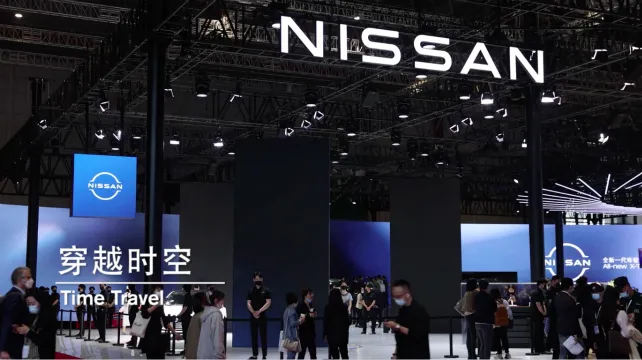*Author: Wang Xuan
“Embrace Change” is the slogan of this year’s Shanghai Auto Show. It has been a week since the Auto Show opened, and I believe everyone already knows what the changes are: electrification and intelligence.
Interestingly, different car companies with different backgrounds have given very different attitudes towards change. Independent brands and new forces brands are trying to complete “overtaking in curves” by embracing change, while traditional brands are desperately trying to maintain their market share by conveying their determination to transform to the outside world, including Nissan, which has always maintained an “ambiguous” relationship with “electrification”.
Nissan will fully deploy e-POWER technology in the Chinese market
In an exclusive interview with the Nissan brand at the Shanghai Auto Show, Nissan executives said that China, Japan and North America are Nissan’s three core markets, and today’s Chinese auto market is in the center of the world auto stage. Chinese consumers’ demand for “intelligentization” and “electrification” has also received high attention from Nissan. Therefore, Nissan will soon introduce e-POWER technology to the Chinese market and plans to launch six models with this technology by 2025.
From a technical point of view, e-POWER’s driving form is similar to that of the currently familiar extended range electric vehicle in China, and the technical route is similar to Honda’s i-MMD. The difference is that e-POWER adopts a series connection, and the engine does not drive the wheels. Nissan executives said that the technical advantage of e-POWER lies in the full-time driving of the battery on the wheels, allowing drivers to enjoy the quietness and acceleration of an electric vehicle, while having efficient flash-charging and discharge capabilities and higher fuel economy.
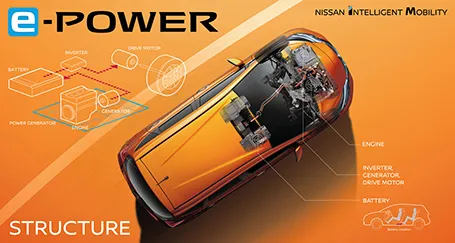
Many people may think that whether it is a hybrid or an extended range electric vehicle, it is not a new technology in the Chinese market, so where is the advantage of e-POWER?
First of all, compared with Honda’s i-MMD, e-POWER technology fully drives the battery on the wheels and has efficient flash-charging and discharge capabilities. Its acceleration characteristics and formal texture are more like pure electric vehicle models. In the future, the high-performance electric motor carried by e-POWER will have a peak torque of more than 500 N·m, which is more than 15% higher than that of the same level HEV, and its start-up overtaking is faster. With advanced electric control technology and a 1.5 Kwh high-performance battery, e-POWER achieves a motor response speed of 1/10000 s.
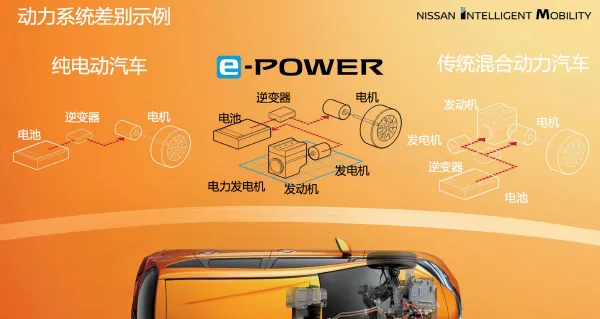 Currently, the only commercialized extended-range electric vehicle in China is the NIO ES8. Compared with the extended-range technology of the NIO ES8, Nissan’s e-POWER has advantages in the high-efficiency conversion of oil and electricity brought by its combustion engine’s thermal efficiency.
Currently, the only commercialized extended-range electric vehicle in China is the NIO ES8. Compared with the extended-range technology of the NIO ES8, Nissan’s e-POWER has advantages in the high-efficiency conversion of oil and electricity brought by its combustion engine’s thermal efficiency.
The domestic development of internal combustion engines has been hindered by the new energy wave, with only a few major manufacturers focused on research and development. In recent years, several companies have developed high-efficiency turbocharged engines and hybrid-specific efficient engines that keep up with international trends. In contrast, new automakers like NIO lack efficient engines and extended-range systems due to insufficient technological accumulation or supplier restrictions, resulting in poor overall system efficiency.
Because the e-POWER’s combustion engine does not drive the wheels, the extended-range system does not have an advantage during high-speed driving when the engine is operating at high efficiency, especially without a large battery pack. More energy loss occurs during the conversion of oil and electricity. To solve this problem and maximize the energy efficiency of the extended-range hybrid system, Nissan has used a very hardcore approach: squeezing the thermal efficiency of the combustion engine to the limit.
The next generation of e-POWER will use a combustion engine with a thermal efficiency of up to 50% as the range extender. In testing, the combustion engine has achieved a thermal efficiency of 46%, and the remaining 4% will be achieved through waste heat recovery technology. Nissan said it will mass-produce a 50% thermal efficiency combustion engine in a few years, but it will certainly not appear in the Chinese market in the near future.
However, consumers can rest assured that Nissan’s internal combustion engine technology is already mature enough, and its performance will not be inferior to that of hybrid models on the market.
The disadvantage of e-POWER technology is that its battery is too small to be externally charged. Although Nissan claims that this eliminates the trouble of external charging, it cannot deny that some consumers have a demand for external charging. For example, users with independent charging piles can supplement the vehicle’s energy at night to meet short-distance energy needs while fuel can be used as a reserve. The plug-in method is difficult to reflect the difference between e-POWER and traditional hybrid forms and will make Nissan lose some market competitiveness.

In addition to e-POWER, the interview with Nissan also mentioned the issue of pure electric vehicles. Currently, the vehicle that we could see soon in mass production and into the market is still the Ariya. As we have previously predicted, Nissan still relies on the brilliant achievements of the Leaf to endorse its own electrification layout.
Since its official debut in July last year, there hasn’t been much information about the Ariya. At the Shanghai Auto Show, the Ariya was still silently staying in the “VIP seats” and could not “go on stage.” However, Nissan has heavily promoted the redesigned X-Trail.“`
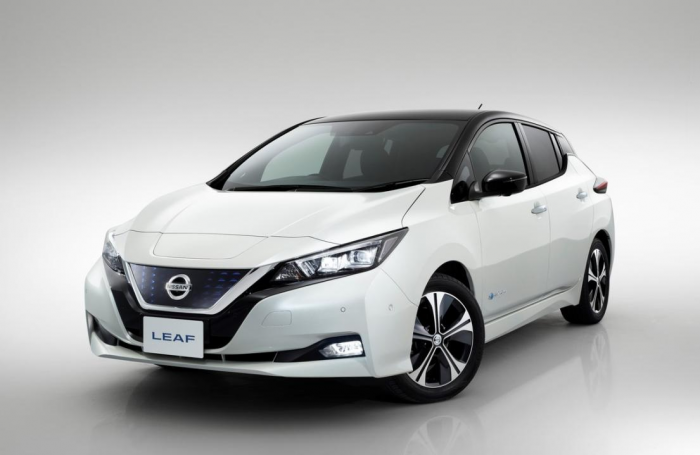
In the next five years, pure fuel-powered vehicles will be replaced by hybrid models. Gasoline will still be the main source of energy for cars in the short term, leaving Nissan with enough time to layout pure electric products.
However, in the Chinese market, electric cars are favored by many policies that promote the prosperity of the electric car market, although the benefits for electric cars may vary in different cities. Therefore, it is currently the peak period for consumers to recognize the brand and product of pure electric cars. If this opportunity is missed, it will be difficult for Nissan’s pure electric products to be widely accepted in the future.
“Intelligence” is the key for Nissan to enter the Chinese market deeply.
In terms of “electrification”, Nissan still needs some time, but in terms of “intelligence”, Nissan has already taken innovative steps, which are reflected in the new generation of Qijun.
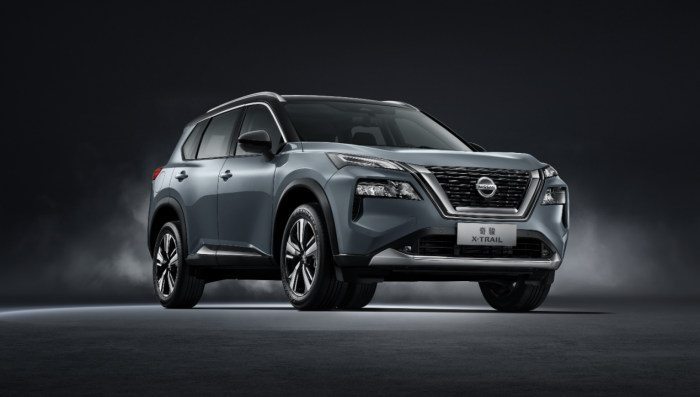
The intelligent transformation of the new Qijun is mainly reflected in the intelligent cockpit. In terms of hardware, the new Qijun is equipped with two 12.3-inch screens and a 10.8-inch HUD. The instrument is a full LCD screen, and the car’s system supports three-screen interconnection. At the same time, it is equipped with the newly upgraded Nissan Connect ultra-intelligent 2.0 system. This car networking system has an open-source ecosystem, which includes more than 200 categories and more than 1,000 partners to create interaction between cars and people, and cars and homes.
At the same time, Nissan has also equipped the new generation of Qijun with the enhanced ProPILOT ultra-intelligent driving assistance system. Based on the basic ACC and lane keeping functions, the daily use of the enhanced version of the driving assistance system has been adjusted. By enhancing the intelligent recognition ability of vehicles and objects in front, the user experience of automatic following becomes smoother and more comfortable. Meanwhile, some humanized functions have been added, such as intelligent avoidance of large vehicles.
Nowadays, Chinese car users have increasingly high demands for intelligent car machines and assistant driving functions. I believe that after positioning, space, power, and driving experience, the degree of intelligence has become the fifth major product point that users need to consider when purchasing a new car.
With the development of intelligent cars, more and more consumers will consider intelligent factors when purchasing cars. From the new Qijun, we can see that Nissan is still a “follower” in the bottom layer and upper layer functions of intelligence. For example, the configuration of built-in karaoke and car-home interconnection ecology is no longer fresh. In this regard, both Nissan and Dongfeng need to think creatively. As long as the functions are new, they can attract more consumers in the era of intelligence.
Summary
“`Facing the “electrification” and “intelligentization”, Nissan is no longer ambiguous in its attitude, but they need to accelerate their pace in the Chinese market. E-POWER is a very competitive technology, but no car manufacturer can develop technology and products without keeping up with the times. Traditional car companies certainly have rich experience in traditional car manufacturing, but they cannot cope with the huge changes brought about by the rapid development of the automotive industry under the blessings of the Internet.
This article is a translation by ChatGPT of a Chinese report from 42HOW. If you have any questions about it, please email bd@42how.com.
